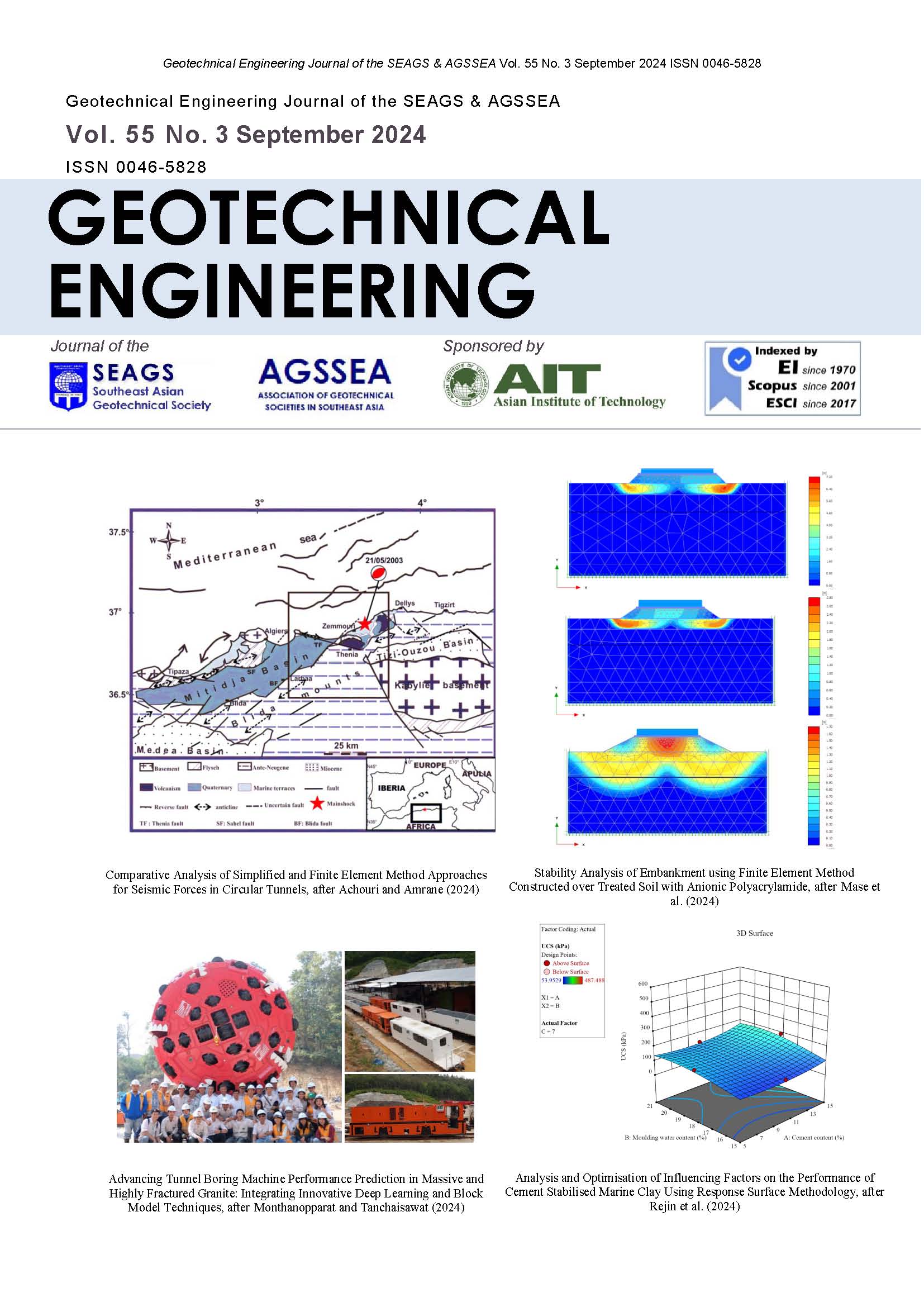Analysis and optimisation of influencing factors in the performance of cement stabilised marine clay using Response Surface Methodology
Main Article Content
Abstract
Stabilisation of marine clays pivotal in providing favourable condition for construction, especially in rapidly developing coastal
regions. Cement stabilisation is a go-to technique for improving the weak engineering characteristics of marine clays. However, the effectiveness of stabilisation is dependent on certain factors. As per previous studies there are numerous factors influencing the degree of cement stabilisation. Due to the complex dynamics among these factors, there is a critical need to understand the interplay between the controlling factors to achieve the optimal performance in cement stabilization. The cement content, moulding water conditions and the curing periods are such controlling factors. The paper adopts an analytical approach to quantify the impact of cement content, moulding water content and curing days in the strength gain of marine clays using unconfined compressive strength (UCS) data. Experimental design using Design Expert was employed to minimise the experimental runs. The ranges of factors were fixed in accordance to previous studies and OMC conditions. Cement
content CC (5-15%), Moulding water content MWD, (15 to 21%), and Curing Days CD, (0-14 days). The study used the Response surface methodology to optimise these factors. The results produced a statistically significant quadratic model using ANOVA (Analysis of Variance). A quadratic equation for UCS was generated depicting the factor's individual and interactive influence. Optimisation results showed a maximum unconfined compressive strength value of 487.488 kPa for a cement content of 15%, curing days-14 days, and a moulding water content of 19.675%
Article Details

This work is licensed under a Creative Commons Attribution-NonCommercial-NoDerivatives 4.0 International License.
Copyright © 2019 Association of Geotechnical Societies in Southeast Asia (AGSSEA) - Southeast Asian Geotechnical Society (SEAGS).


